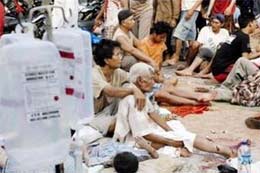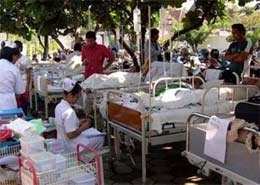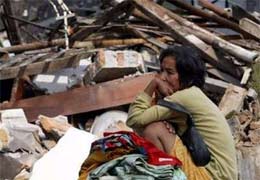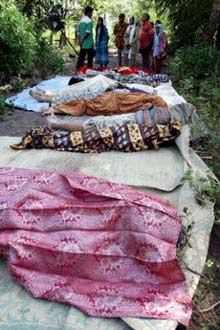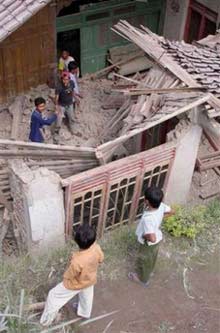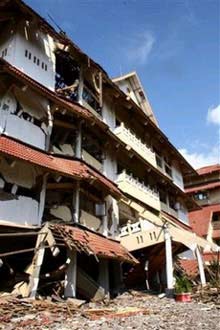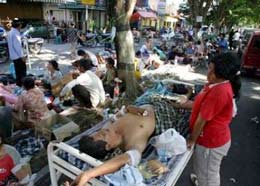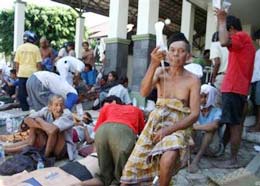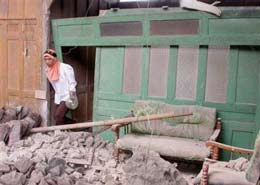A powerful earthquake measuring 6.2 on the Richter scale struck the city of Yogyakarta, located 400 km east of Indonesia’s capital Jakarta, in the early hours of May 27. This disaster has claimed the lives of over 3,500 people and injured thousands more. It is the worst catastrophe to hit the country since the tsunami disaster in 2004. The international community is rapidly coming together to assist Indonesia in addressing the aftermath of this disaster.
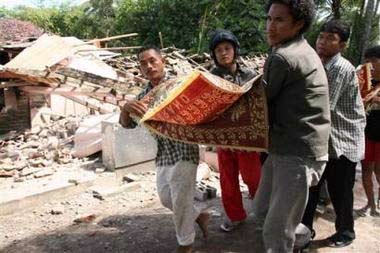
The death toll appears to be rising. (Photo: AP)
Rescue officials report that at least 3,505 people have died, with more than two-thirds of those fatalities occurring in the Bantul region. Arifin Muhadi from the Indonesian Red Cross stated that “the number is expected to continue to rise,” adding that over 3,400 people have been injured. Rescue teams are actively searching for victims.
During a field visit shortly after the earthquake, Indonesian President Yudhoyono urged rescue teams to work urgently to save those who remain trapped.
UN Secretary-General Kofi Annan, Russian President Vladimir Putin, Chinese President Hu Jintao, and several other world leaders have extended their condolences to the government and people of Indonesia, expressing their readiness to assist in recovery efforts following the earthquake.
Malaysian Deputy Prime Minister Najib Razak announced that his country would send a search team along with one ton of medical supplies and essential items to assist earthquake victims in Indonesia. A rescue team is set to depart for the earthquake-affected area on the evening of May 27. The European Commission declared that it would provide emergency aid to Indonesia amounting to approximately $3.8 million.
Meanwhile, the United Kingdom and France also offered emergency assistance to help Indonesia recover from the earthquake. The Japanese government has also announced plans to send a rescue team to Indonesia and is prepared to send relief supplies as well.
Indonesia is located on the “Ring of Fire” in the Pacific Ocean. The country regularly experiences severe earthquakes that cause significant loss of life and property. Most recently, in late December 2004, Indonesia endured a massive earthquake measuring 9.15 on the Richter scale, which triggered a tsunami that claimed nearly 170,000 lives.
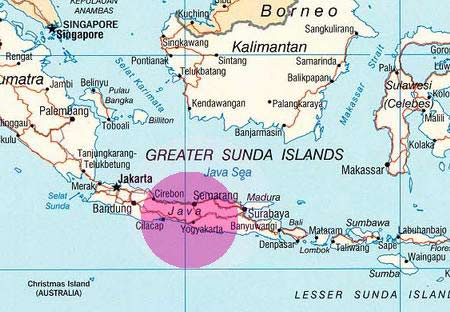
Location of the earthquake on the map of Indonesia
Authorities report that the 6.2 magnitude earthquake has also increased activity at Mount Merapi, which has experienced several lava eruptions in recent weeks. The U.S. Geological Survey indicated that the earthquake occurred at 5:54 AM in an area approximately 25 km southwest of Yogyakarta. Police reported that power and communication services across Yogyakarta were disrupted.
Transportation Minister Hatta Radjasa stated that the earthquake also damaged the runway at Yogyakarta airport, meaning that flights there may not resume until at least tomorrow.
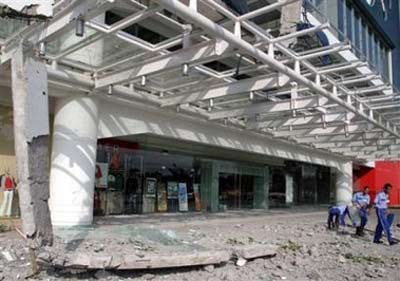
Many high-rise buildings have been severely damaged while others have been flattened.
In the chaotic atmosphere following the earthquake, rumors of an impending tsunami led thousands of people to evacuate to higher ground by car and motorcycle. The city of Yogyakarta is located about 30 km from the ocean, and over two hours after the earthquake, no tsunami occurred.
President Yudhoyono has instructed the chief of staff of the military to send troops to the earthquake-affected area to assist in evacuating residents and conducting rescue operations.
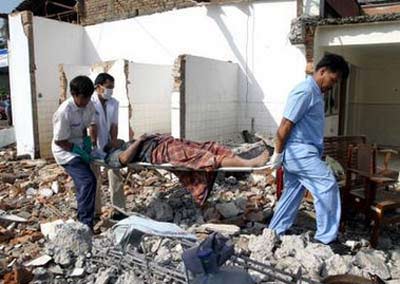
Medical staff attending to an injured man (Photo: Reuter)
The number of casualties continues to rise, and hospitals in the province are overwhelmed with victims. Local radio reports indicate that there are currently insufficient doctors to treat the injured. Meanwhile, victims are still being transported to hospitals by truck, bus, and even on foot due to a lack of ambulances.
Churches and hospitals have become shelters for many residents. Many of them state that they do not wish to return home for fear of aftershocks or volcanic eruptions.
Some of the latest images from the devastating earthquake:
|
|
|
|
|
|
|
|
|
|
|
|
|
|
|
|
|
|








































